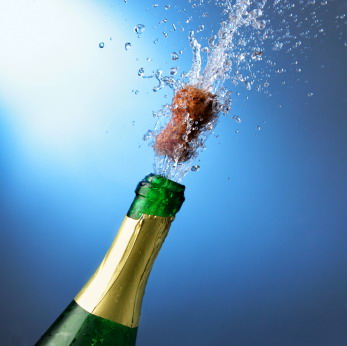 Sparkling wines made outside of Champagne, France, may not be called Champagne as it’s a trademarked term. However, they often use the same methods and/or grapes used in Champagne.
Sparkling wines made outside of Champagne, France, may not be called Champagne as it’s a trademarked term. However, they often use the same methods and/or grapes used in Champagne.
5 Surprising Facts about Sparkling Facts:
1. Bubblies made in Burgundy, France, are called Crémants de Bourgogne while those from Alsace are Crémant d’Alsace.
2. Spain makes Cavas (“cave”), Italy makes either Prosecco (lightly sparkling) or Spumante (fully sparkling and sweet), Germany makes Sekt or Deutscher.
3. Those from New World regions, such as Canada, California, Australia and elsewhere, are simply called sparkling wine.
4. Drink bubbly from a flute glass that preserves its bubbles and concentrates its aromas. (Forget those old coupe glasses molded to the shape of Marie Antoinette’s breasts.)
5. Sparkling wine is one of the most versatile wines with food because of its zesty fruit aromas, mouth-watering acidity and palate-cleaning bubbles.
Some sparkling wines outside of Champagne are made from a cheaper and quicker carbonation process, during which bubbles are injected into the tanks of fermenting wines. This method doesn’t create wines with the same refinement and nuance as the Champagne method. The bubbles tend to go flat quickly.
 Signature bubbly aromas include toast, yeast, fresh-baked bread, green apple, lemon, lime and orange zest.
Signature bubbly aromas include toast, yeast, fresh-baked bread, green apple, lemon, lime and orange zest.
Pair dry styles with spring rolls, almonds, canapés, brioche bread, cheeses, poultry, sashimi, Thai coconut shrimp, pasta with cheese-based sauce, caviar, shellfish, seafood risotto, snack foods, onion rings, egg dishes, avocado salad, guacamole, pâté, pasta, charcuterie, veal, salads and vegetarian casseroles.
Sweet bubbly (doux or spumante) goes well with curries, fruit flans, cobblers, biscotti, nuts, soft cheeses, Christmas pudding, lemon soufflé, mille feuilles, pavlova and tiramisu.








